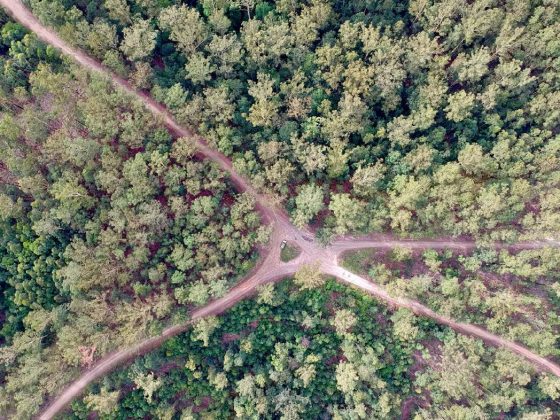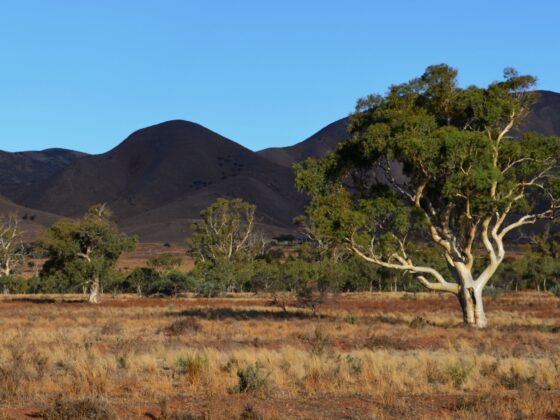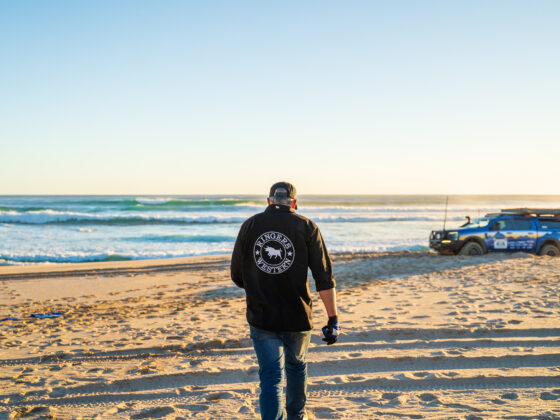With nearly 30 extinct species under its belt, and a now-official Australia-wide spread, how can this introduced species possibly be stopped?
Up until a few hundred years ago, our entire landscape was rich in wildlife of all sorts – particularly our unique mammals. A simple walk through one of our semi-arid areas would have had you witnessing scores of lizards and small mammals. At night, there would have been even more scurrying around. Australia is a special place. An isolated continent that has seen the evolution of animals unlike any others on Earth.

This story is taken from Pat Callinan’s 4X4 Adventures magazine. Follow this link to pick up a subscription.
But that changed. Until a few hundred years ago there were no foxes, rabbits, invasive ants or many other non-native pests; well there were dingos – they had been around for a few thousand years. Nor was there any sign of a cat – the most destructive of all invaders. There are only two continents on Earth that have not evolved with cats – Australia and Antarctica – but they were deliberately introduced and released by Europeans to control mice and introduced rabbits. Now a recent report by Threatened Species Recovery Hub has revealed that our continent is in fact right now 99.8% covered in them. So is it any wonder that, given our unique fauna has not developed defences against this alien predator, we are the world leaders (losers) in mammal extinction rates? Rates which are showing no signs of abating. It is a dismal outlook. The feral cat has become well and truly entrenched in Australia, and seems set to eat its way through our ecosystem.
The Predator
Felis catus. The Feral Cat differs in no way to the much-loved pet variant. In fact according to the Department of the Environment and Energy, a feral cat is defined as an animal ‘that lives and reproduces in the wild and survives by hunting or scavenging; none of its needs are satisfied intentionally by humans’. In other words, cats can readily transition between domesticated, stray or feral. Other than dogs or dingos they have no natural predators. In the wild they are predominantly solitary, nocturnal, opportunistic and mostly carnivorous feeders; almost solely reliant on live prey. They can adapt to every environment we have, from alpine to arid; and they’re reclusive, stealthy and difficult to detect. They are well equipped predators. Once mature (12 months) they will breed in any season – up to two litters per year – and if conditions are favourable, they can ‘breed like rabbits’. Each cat will eat at least two to 10 native animals per day.

Estimating the cat population is extremely difficult due to their wide-ranging and stealthy nature, but this recent report (derived from over 40 scientists and using data from over 100 separate studies across Australia) suggests that the population stands between 2.1 million and 6.3 million feral cats. Based off this report, which is the most earnest effort to date in recording feral cat numbers, that means at least 4.2 million (to worst case 12.6 million) mammals, reptiles, birds and other animals are being consumed by feral cats every 24 hours. Regardless of ‘exact’ population numbers there is a scientific consensus that the population of feral cats is between 1 million and 11 million.
The Prey
Over 30 mammal species are now extinct and the feral cat was a primary driver in destroying almost all of these. They had not evolved with the defences to meet the introduced threat and had become easy pickings. But it is not only mammals on the menu; birds (mainly ground-nesting), lizards, frogs and insects have all felt the impact too … and continue to do so. With any further growth of the feral cat population, it is fair to say that our ecology, which has evolved over millennia and has seen a real shock over the last century or two, seems set for more troubled times ahead. Even without the growth of our feral cat population, our native fauna will continue to decline.

The Measures
The problem with eradicating any pest is complex. Some may simply say ‘shoot ’em or poison ’em’ but the problems lay a little deeper. We are lucky to have many conservation groups (like Australian Wildlife Conservancy and Bush Heritage Australia plus scores of others) that have people who do ‘wildlife’ for a living. People who spend their lives looking for the ‘elixir’; the ‘cancer cure’ if you will. Even our Federal Government has invested solid resources to look at the issue.

Fencing, baits, ground shooting and trapping are all options that are currently being applied or have already been used. Each has its issues. Fencing requires maintenance, is subject to topography, and can act as a barrier for a small number of non-target species. Ground shooting is expensive and largely ineffective, leaving many cats undiscovered due to their widespread and elusive nature. Luring and trapping is difficult due to seasonal diets (an abundance of mammals or lizards is preferable) and particular cats simply not being interested. Baiting is subject to State laws, and has to be done carefully to ensure only target species are selected; and it also carries the problem of cats not being interested in baits. To take the problem further, a localised reduction in cats may increase numbers of rabbits or other vermin; and even reduce the number of dingos (the only predator). Everything has an effect. And this is the problem … gaining the understanding and developing a holistic approach that is effective. In most cases this means that not just the cats but also other invasive species need to be targeted for reduction at the same time – with each species having its own flow-on effect.
Today the Government and Non-Government Organisations (NGOs) are all working hard to eliminate feral cats. As usual, funding is the big issue. While the Government could save millions by reducing overseas junkets and ridiculous MP super, benefits and pensions, our wildlife organisations (many of whom rely on volunteer work) could beneficially use either the money saved (unlikely) or the recognition and support of volunteers and donations.

The Outlook
Currently, both the Commonwealth Government and NGOs are doing some great work to reduce the feral cat problem. Multi-faceted cull/conservation programs are underway across Australia in various shapes and forms. Support is being given to landowners and leaseholders in the form of direct measures (baits) and education. The NGOs are setting up tracts of protected land and taking serious measures to protect (in particular) the currently endangered and nearly extinct animals. There are several NGOs which are purely focused on protection, and cat-free areas and islands have been set up purely for relocating and saving species from extinction (Dirk Hartog Island and Christmas Island are two examples). Nobody is making claims about ridding Australia completely of the pest. The best that can be hoped for is the continued survival and regeneration of our remaining native species.
Want more?
Further reading on the feral cat problem, the work being done and how to make a difference can be found here:
www.nespthreatenedspecies.edu.au












